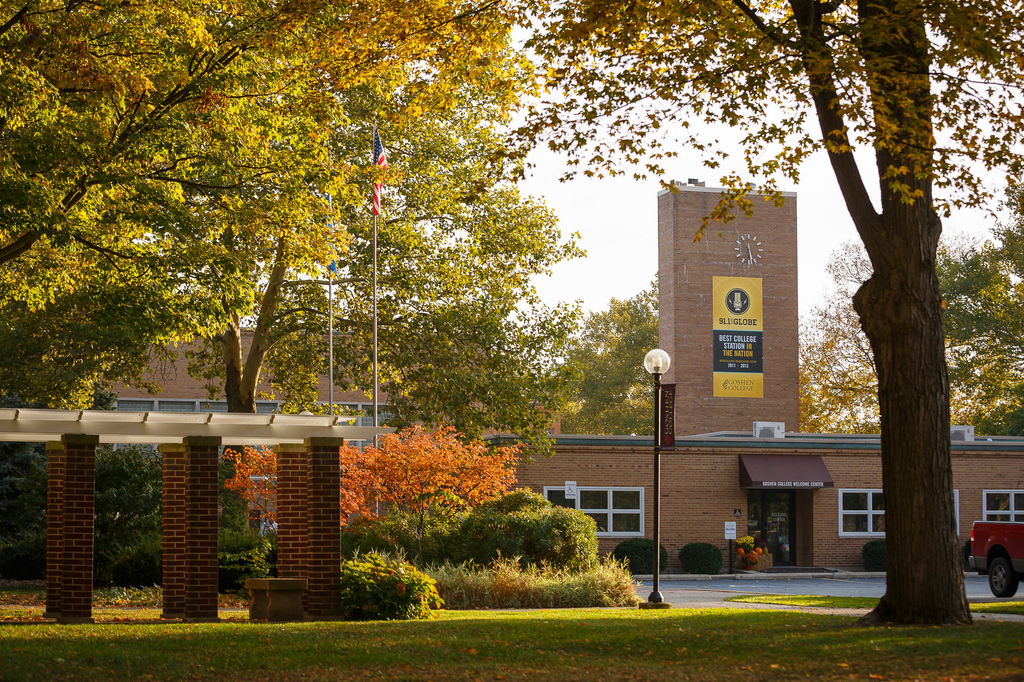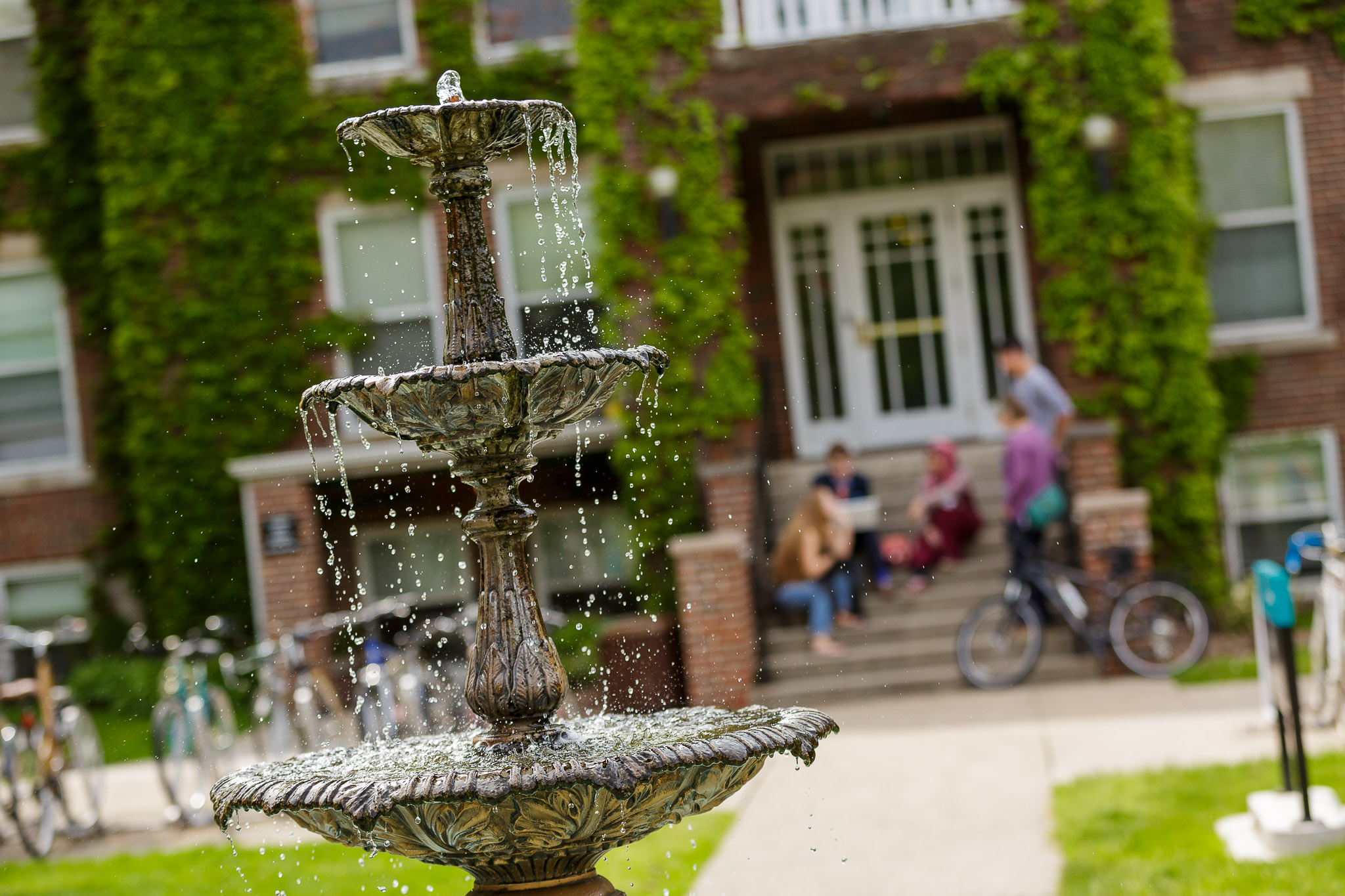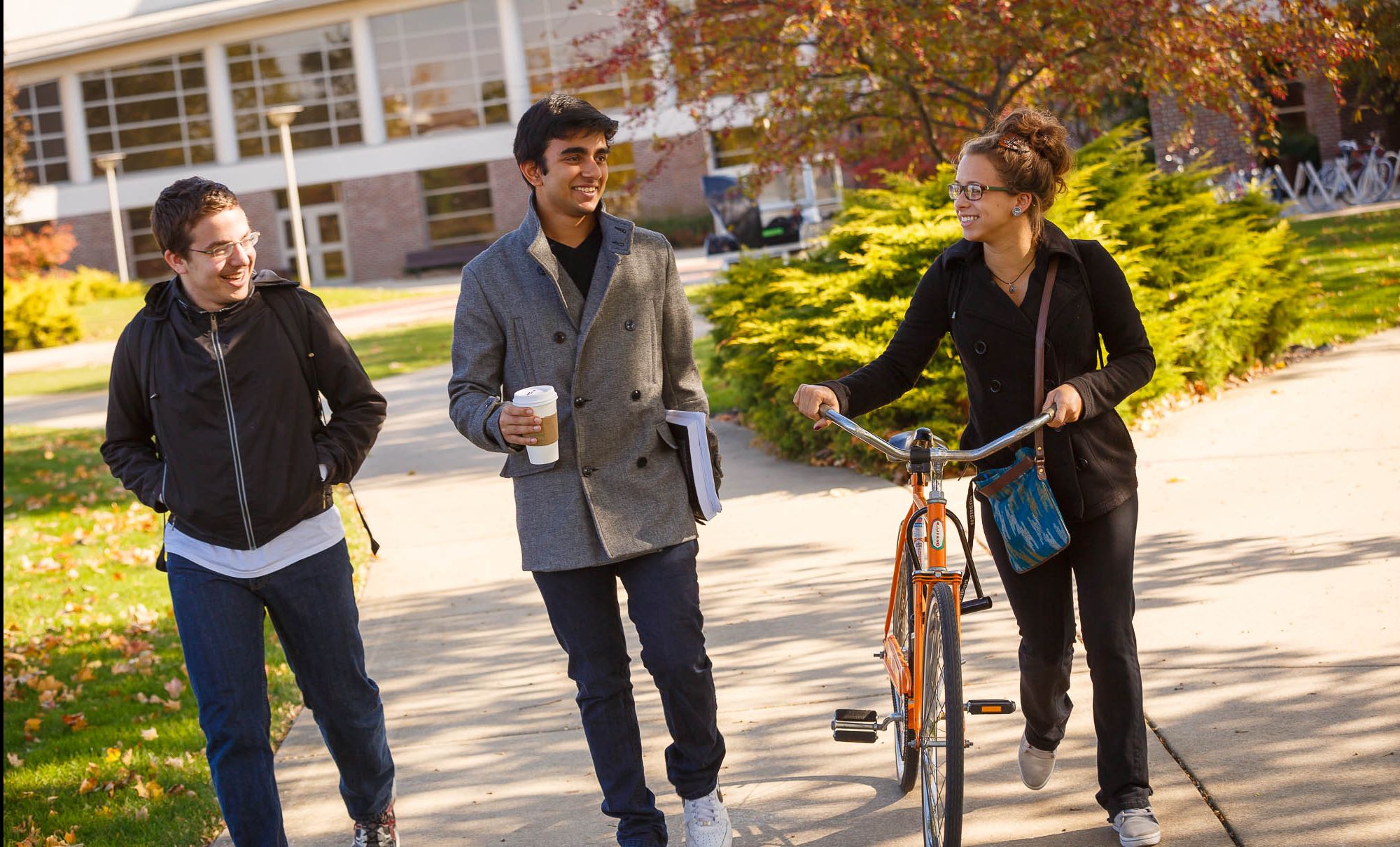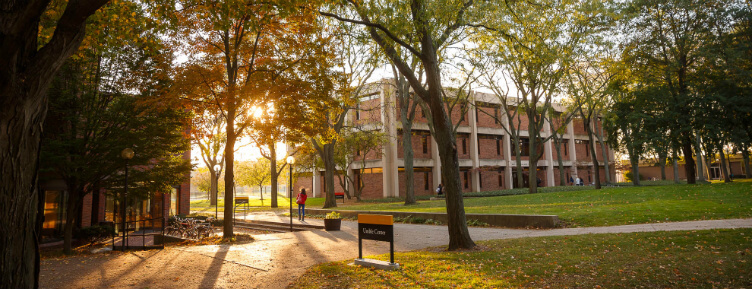Opinion: So What Should We Think About All These Dandelions?
By Glenn Gilbert, Goshen College Sustainability Coordinator
This year we have a bumper crop of dandelions at Goshen College! In fact, I think it is safe to say that in the 108 year history of our campus, dandelions have never been this abundant or healthy. For the last several decades at least, these perennial yellow harbingers of spring have been kept mostly in check with applications of various chemicals. But last year, the college made a major decision to revert large sections of lawn to native landscaping.
First we eliminated most of the turf grass and planted a mix of native wildflowers (forbs) and native grasses. Knowing that it would take a while to fully establish a mature native landscape, we made efforts to educate everyone that this would be a work in progress for many years. Last summer, we watched the first battle of weeds and native seeds compete in this freshly open terrain. Opinions were mixed, but for many of us it was exciting to witness the late summer/early fall display of wildflowers and butterflies that had replaced our monoculture of grass.
And then this spring the dandelions cut loose! What a sight!
For some this was exciting; an institution that has said it was committed to environmental sustainability was taking large prominent sections of lawn and restoring it to native plants. No longer were artificial fertilizers or herbicides that pollute our waterways and destroy wildlife being used.
However, for many others this was just too much. For years we have prided ourselves on beautiful, well maintained lawns. We have gone to great lengths to create a positive impression for visitors, prospective students, and members of the greater Goshen community by keeping our grounds green, lush and well mown. To see sights like this picture in front or our beautiful Music Center is just plain embarrassing.
So what should we think about all these dandelions? Most of us, including myself, can think back to early childhood memories of early spring harvests of bouquets of yellow blossoms that we would present to our mothers, the yellow (butter) stains, the milky stems and of course launching the multiple seeds to the wind. Those are good memories.

But as we grew older, we declared war on this blight and we used everything in our means to destroy these amber monsters. We dig, chop and pull these things out from the roots only to find the next morning that they are back, having multiplied overnight. In most cases the only sure-fire way to kill dandelions is to resort to chemical weapons. Hundreds of millions of dollars are spent each year on this never-ending herbal war.
My question for the season that I have asked numerous people is WHY. Why do we start out thoroughly enjoying the dandelion as a child and then grow to hate them so? What is behind the intense feelings that are evoked when we see the dandelion?
Perhaps deep in our psyche we still seek out the open savanna (grass lawn) for comfort and safety. There are other plausible deep-seated reasons, but I believe in this day and time, the dominant opinion is that dandelions represent neglect. Right up there with un-mown grass or tall dead weeds, when we see dandelions we think “neglect.” And certainly neglect is not what we want to communicate at Goshen College.
Now I’m ready to question that attitude, both within myself and in others. Did you realize that dandelions provide the earliest seasonal source of pollen and nectar for the honey bees? Along with the native wildflowers and grasses that are becoming established on our campus, dandelions have deep roots that draw minerals and nutrients to the surface and provide channels for water to be absorbed into the ground. Even though we have forgotten how to use them, dandelions can be a source of food, rich in vitamins. So I challenge the notion that allowing dandelions to grow is neglect.
If you have a few minutes, check out this short video The Dandelion Testimony. Or in the interest of equal time, consider this video How to Kill Dandelions in Your Yard. You decide. As for me, I’m pleased and proud that Goshen College has chosen to make this commitment to the environment by restoring part of our campus to native plants, which for the time being includes dandelions.
Look closely at that first picture. In amongst the long stems and gray balls of fluff you will see young healthy coneflowers, daisies and black-eyed susan plants along with dozens of other native species working to take their place on our campus. In time, these forbs and grasses will mature and provide plenty of competition for these delicate yellow blossoms. But for right now, I’m Making Peace with Dandelions.




